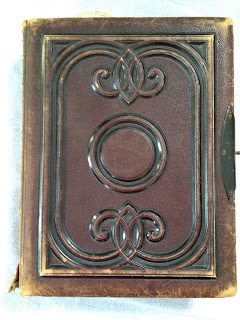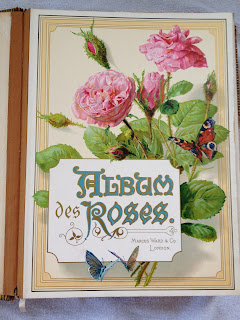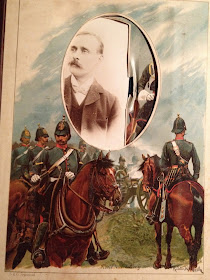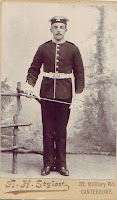 |
| My Pinterest Boards |
A Pinterest user is repinning photos from other genealogists' pins (absolutely ok) BUT the links to the original blog post or website are gone and have been replaced with a link to this person's own website (not ok)
Pinterest has acted quickly on all DMCA complaints and so far has removed every inappropriately linked pin once a complaint is filed.
From one Pinterest board with over 4,000 inappropriate pins, it has diminished to 1,384 pins as of today. Unfortunately they are still being redirected to the user's own website instead of to the original owner and website.
WHAT SHOULD WE DO?
We need to continue to spread the word and urge others to check his/her boards for their own photos. If found with the correct original link removed, please follow instructions given at HEADS UP ALL GENEALOGISTS!
Interestingly enough, shortly after I wrote my HEADS UP post, this user set up a third board called My Family Tree. It has over 800 pins but the majority have the original appropriate link. Many however do not. This is puzzling to me but I am staying vigilant and checking every few days to see if the original links remain or if they have been magically replaced with links to this user's website. You may wish to also check periodically.
FIGHTING THE ISSUE
I thought I would also fill you in on what I am doing to continue to fight this inappropriate pinning by this Pinterest user. Every morning I take a half hour and do a Google Image reverse search for the pins remaining on the one board with 1,384 pins. What this search does is look for matching images. So if for example, image X is on his board without the original link, I can instruct Google to search for a match elsewhere. Any matches found will display on my browser. It is easy then for me to click through to the original site and notify the site owner.
SAMPLE EMAIL
Here is the email I send to the actual photo owner:
Hello
I'm Lorine McGinnis Schulze of Olive Tree Genealogy. Recently I wrote a blog post about an issue with a Pinterest user. This user is using other genealogist's photos but instead of linking back to the owner and the website/blog where the photo is found, legitimate links have been replaced with links to his own website.
One of your photos is on his board but is not linked to your blog where it originated.
Here is the link to your photo on your website [insert link]
and here is the link to the same photo on his Pinterest board (linked to HIS website)
[insert link to pin]
Many of us have reported him to Pinterest and filed a DMCA complaint to have our pins removed from his board.
Please see my blog post HEADS UP ALL GENEALOGISTS at http://olivetreegenealogy.blogspot.com/2013/05/heads-up- for full details and complete instructions (with links) on how to report him and how to file that DMCA complaint.all-genealogists.html
I found 11 of my photos being misused on his boards and within 3 hours of my complaint Pinterest removed them all so we are getting rapid and positive response from Pinterest.
Thank you
Lorine
I have had positive responses from everyone I have notified. So I suggest that we all pitch in and do this. Take a few minutes today and search for duplicate images, then notify the site owners. Here is how to do a reverse image search on Google
REVERSE IMAGE SEARCH ON GOOGLE
I chose to download the add-on for Firefox and I love it. All I need to do is right click the image I wish to search for, and a drop down menu appears which includes the words "Search Google with this image" I choose this option and any duplicate images appear in the search results, with links to the originating website.
If we all work together as a team we can stop issues such as this one.
































